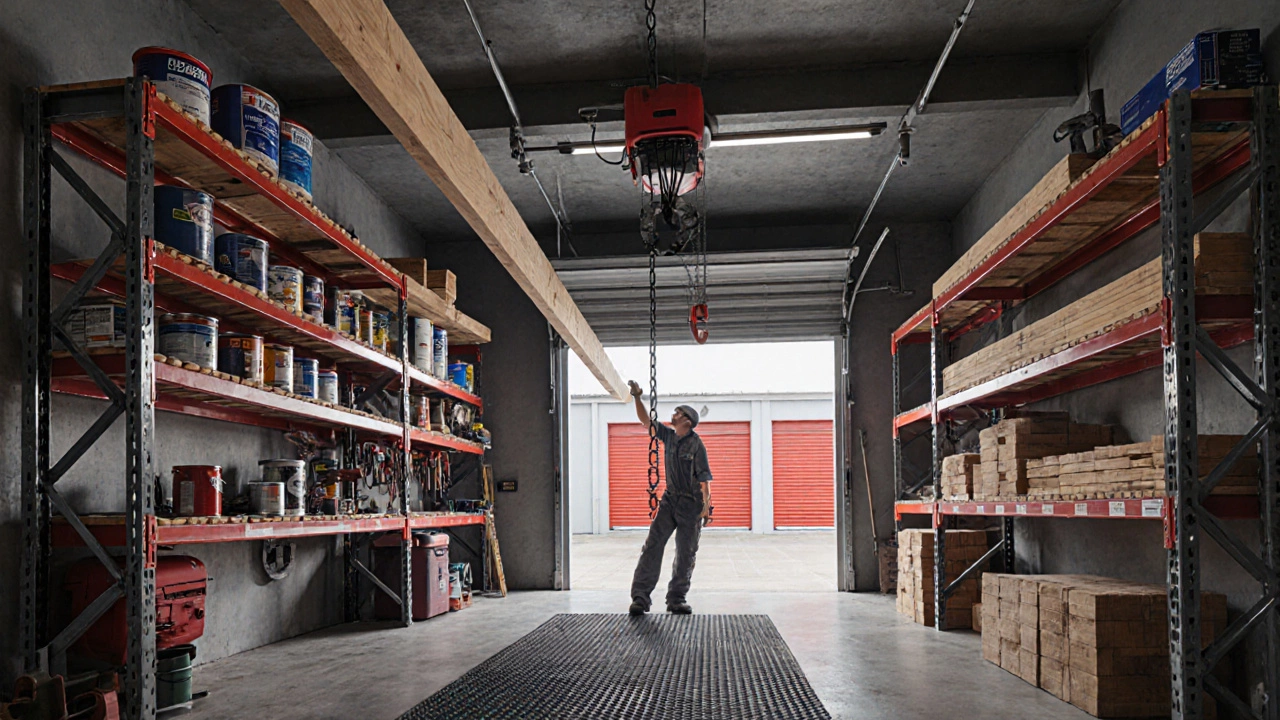Understanding Storage Solutions: Definitions, Types, and How to Choose the Right One

Key Takeaways
- storage solutions cover anything from a wardrobe organizer to a cloud‑based file server.
- Pick a solution that matches the item type, space constraints, and how often you need access.
- Physical and digital solutions often complement each other - a tidy home can start with good cloud backups.
- Cost, scalability, and security differ dramatically between self‑storage units and modular shelving.
- Simple habits like labeling and regular decluttering keep any solution efficient.
What Are Storage Solutions?
When people talk about storage solutions is a broad term that describes methods, products, or services used to keep items organized, safe, and accessible.
Whether you’re stacking boxes in a attic, installing a sleek closet system, or uploading photos to a server, the goal is the same: make room for what matters while protecting it from damage or loss.
Major Categories of Storage Solutions
Below are the most common families of storage, each with its own strengths and typical use‑cases.
Physical Home Storage
Home storage is a collection of furniture, containers, and built‑in units designed for everyday living spaces. Typical attributes include material (wood, plastic, metal), load capacity (5‑150kg), and modularity. A well‑planned home storage system can free up floor space, reduce visual clutter, and improve safety by keeping pathways clear.
Self‑Storage Units
Self‑storage refers to rentable, climate‑controlled spaces ranging from 5m² lockers to 30m² warehouses. Key specs are rental price per square foot (often £10‑£25), security features (CCTV, keypad access), and contract length (month‑to‑month or annual). Ideal for seasonal items, business inventory, or when you’re between homes.
Cloud Storage
Cloud storage is a digital service that saves files on remote servers accessed via the internet. Common metrics include storage limit (10GB‑10TB), cost per gigabyte (£0.02‑£0.15 per GB per month), and redundancy level (often 3‑copy redundancy for data safety). Perfect for backups, collaboration, and accessing files on the go.
Garage Storage Systems
Garage storage includes wall‑mounted racks, ceiling hoists, and freestanding cabinets built to hold tools, sports gear, and automotive supplies. Load capacity can exceed 200kg per shelf, and many systems are adjustable to fit different ceiling heights.
Closet Organizers
Closet organizers are modular components such as hanging rods, pull‑out drawers, and shoe shelves that turn an empty closet into a tidy wardrobe zone. Materials range from melamine to laminated steel, and typical price points are £30‑£150 per linear foot.
Modular Shelving
Modular shelving consists of interchangeable panels and supports that can be re‑configured as needs change. Load ratings often start at 30kg per shelf and can be stacked up to 2.5m high. Popular brands market them as “plug‑and‑play” for home offices or hobby rooms.
Pallet Racking
Pallet racking is an industrial‑grade system used in warehouses to store goods on standardized pallets. Typical aisle width is 3m, load capacity per level can reach 2tonnes, and the system can be expanded vertically to 12m.

How to Choose the Right Storage Solution
Picking the best option boils down to a few practical questions:
- What am I storing? Heavy tools need sturdy shelving, while photos belong in cloud storage.
- How often will I need access? Frequently used items benefit from a walk‑in closet, whereas seasonal décor can go into a self‑storage unit.
- What space do I have? Small apartments may rely on modular shelving, while a house with a garage can add wall‑mounted racks.
- What’s my budget? DIY closet kits are under £100, but a full‑service self‑storage contract can cost several hundred pounds a year.
- Do I need security or climate control? Artworks, electronics, and important documents usually require climate‑controlled, fire‑rated storage.
Answering these points narrows the field quickly. For example, a freelance photographer might combine cloud storage for raw files, a closet organizer for lenses, and a small self‑storage unit for back‑drops used only during shoots.
Real‑World Examples
Case 1: Small London flat - Emma lives in a 45m² studio. She installed modular shelving above her desk (load 25kg per shelf) and added a set of closet organizers for coats. For seasonal clothing, she rents a 5m² self‑storage locker at £12 per month. She backs up personal documents to a 2TB cloud plan costing £6/month.
Case 2: Home‑based woodworking hobbyist - Tom turned his garage into a workshop using wall‑mounted steel racks rated at 200kg each, plus a ceiling hoist for lumber. He keeps larger finished pieces in a nearby self‑storage unit with 24‑hour CCTV.
Case 3: Remote startup - A tech team stores code repositories on a secure cloud platform (5TB, encrypted at rest) while keeping physical prototypes in a climate‑controlled pallet‑racking system inside a leased warehouse.
Comparison of Key Attributes
| Attribute | Home Storage | Self‑Storage | Cloud Storage | Garage Systems |
|---|---|---|---|---|
| Typical Cost (annual) | £150‑£500 (furniture) | £120‑£800 (rental) | £5‑£200 (subscription) | £80‑£300 (installation) |
| Access Frequency | Everyday | Occasional | Instant (online) | Weekly‑Monthly |
| Security Level | Lockable doors | 24/7 CCTV, keypad | Encryption, 2‑factor | Heavy‑duty locks |
| Scalability | Limited by space | Add more units | Upgrade plan | Add racks or mezzanine |
| Best For | Everyday household items | Large, infrequently used goods | Digital files, backups | Tools, bikes, sports gear |
Quick Tips & Best Practices
- Label every box or digital folder - a clear label saves minutes of hunting.
- Apply the 90‑10 rule: keep 10% of items you use regularly, store the rest.
- Use vertical space: floor‑to‑ceiling shelves add up to 30% more capacity.
- Regularly audit your storage: discard anything you haven’t touched in a year.
- Back up critical data in at least two locations - one local, one cloud.
Frequently Asked Questions
What factors determine the cost of a self‑storage unit?
Price depends on size (square footage), climate control, security level, and contract length. In the UK, a 5m² unit without climate control might cost around £12 per month, while a 10m² climate‑controlled space can be £30‑£45.
How much cloud storage do I need for a family of four?
A good starting point is 2TB - enough for photos, videos, and documents. Most providers let you upgrade in 500GB increments, and the cost usually stays under £10 per month.
Can I combine physical and digital storage for better organization?
Absolutely. Store physical items you need regularly in home storage or closet organizers, and back up important documents or media files to cloud storage. This hybrid approach reduces clutter while keeping data safe.
What’s the best way to protect items in a garage storage system?
Use rust‑proof metal racks, add a rubber mat to the floor, and keep humidity below 60%. For valuable tools, consider a lockable cabinet within the system.
Do I need insurance for items stored in a self‑storage unit?
Many storage facilities offer optional insurance. If the items are valuable, buying a separate policy or adding a rider to your home insurance is wise. Check the provider’s coverage limits before committing.
Understanding the range of storage solutions helps you turn chaos into order, protect your belongings, and even save money in the long run. Start by assessing what you own, where you need it, and how often you’ll use it - then pick the mix that fits your lifestyle.